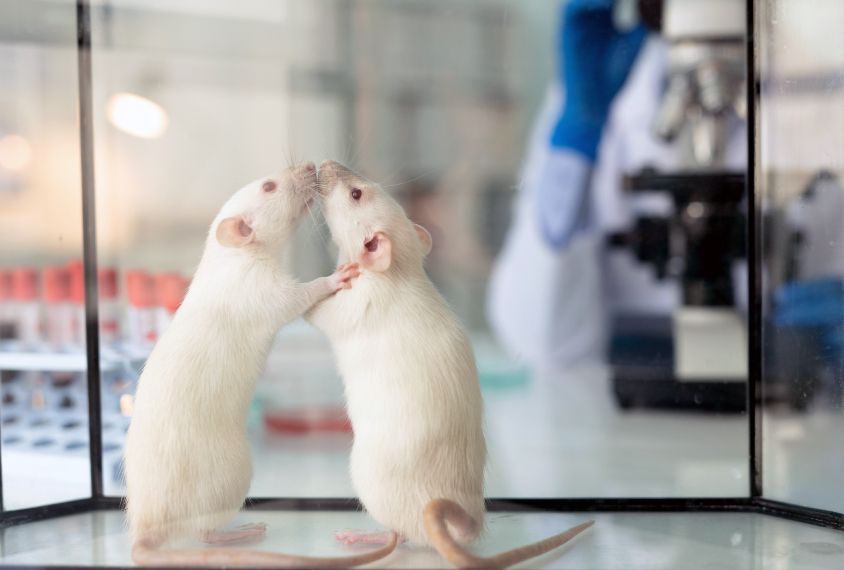Female rats can’t tell familiar rats from strangers until adolescence, whereas male rats can do so as juveniles, new research suggests.
Remove their ovaries, and female rats never develop the ability — a deficit that isn’t reversed by giving them estrogen before puberty or in adulthood. These sex differences are also reflected in rats’ brain activity.
Researchers presented the unpublished findings virtually today at the 2021 Society for Neuroscience Global Connectome. (Links to abstracts may work only for registered conference attendees.)
The results suggest that ovarian hormones play an important role in female rats’ development of social recognition during puberty, says Katie Yoest, a postdoctoral researcher in Alexa Veenema’s lab at Michigan State University in East Lansing, who presented the data.
Race for recognition:
In previous unpublished work, Yoest found that juvenile and adult male rats can tell strangers from familiar rats, but juvenile females cannot.
To figure out when female rats develop this ability, Yoest and her colleagues tested female rats of different ages in a social discrimination task to gauge whether the rats gravitate toward an unfamiliar rat or a familiar one.
Adolescent, young adult and adult female rats spend more time checking out the new rat, the researchers found, indicating that these animals can tell familiar rats and strangers apart; not so for the juvenile female rats, who split their time evenly between the two.
The timing of this social-recognition ability in the female rats made Yoest wonder if it is linked to the influx of ovarian hormones associated with puberty.
“Where is it during development that this seems to come on board?” Yoest says. “What changes during this period? Estradiol.”
Yoest and her team tested female rats that had had their ovaries removed as juveniles, cutting off their supply of ovarian hormones before puberty. These rats never developed the ability to tell new rats from familiar ones, even as adults.
Giving female rats ovarian hormones had mixed results: Juvenile rats given estradiol benzoate spent more time than usual with rats they knew, the opposite of typical social-discrimination behavior; adult rats given estradiol didn’t perform any differently than before, regardless of whether they’d had their ovaries removed.
This result suggests that ovarian hormones are involved in the development of social discrimination during adolescence, but simply administering them before or after puberty isn’t enough to restore rats’ ability to tell stranger rats from familiar ones, Yoest says.
Active investigation:
The researchers also studied both male and female rats’ brains after they’d spent some time investigating a cagemate. The social encounter increased activity in the anterior bed nucleus of the stria terminalis (BNST) — a brain region linked to fear and social behavior — but only in females.
“We know [the anterior BNST] is involved in anxiety, so maybe that activation is preventing them from doing normal social discrimination compared to the males,” Yoest says.
Next, she and her team plan to look at the activation of specific cells in the BNST, particularly those that express receptors for the social hormone oxytocin, in both male and female rats.
Read more reports from the 2021 Society for Neuroscience Global Connectome.






